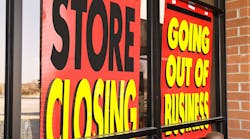Latest from Professional Development/Leadership
HUMAN NETWORK: 4 Self-Inflicted Missteps That Get Brands Into Trouble
Part 2 of a 3-Part Series —
Remember Blockbuster? At one time, the chain of 9,000 video-rental stores seemed to be everywhere, and families spent their Saturday evenings perusing the shelves for the latest releases.
But as the industry and the world changed, and movie-renting habits evolved, Blockbuster failed to adapt, even at one time declining an offer to partner with an emerging new company called Netflix. Now there are roughly a dozen Blockbuster stores left.
The Blockbuster story isn’t that unusual. Brands often don’t recognize the need to adjust to changing markets and circumstances until it’s too late.
Standing still while changes rage around you is a formula for failure.
With the right decision making, it’s possible for brands to live forever. But too often brands get into trouble due to the self-inflicted actions of their owners.
There are probably a dozen identifiable ways businesses can make a mess of their brands. Here are 4:
1. The belief that what worked yesterday will work today.
Customers change, the world changes, brand reputations change and competition changes. Doing what once worked when the current landscape is different makes no sense. Markets and customers change quickly. So companies must be flexible, agile, and quickly decisive.
2. The failure to innovate.
In an ever-changing, increasingly competitive marketing world, brands need customer-insight-driven innovation to stay relevant. Innovations breathe life into brands. It’s important for businesses to understand that innovation and improvement are not the same thing. Innovation means doing something different. It doesn’t mean doing the same thing better.
3. The lack of focus on the core customer.
The list is long of brands that lost focus on the core customer and suffered because of it. Making sure that loyal customers don’t defect to a competitor is key to the bottom line. Research we did at Arcature showed that loyal customers are 8 times as valuable as someone who just considers your brand. Losing a small percentage of core customers will account for a disproportionate amount of lost income for the brand. It will also carve into the brand’s image and reputation.
4. The backtracking to basics.
People often talk about a need to "get back to the basics" when a brand encounters trouble. But while getting the basics right is certainly necessary, "back to basics" is not a strategy. What got the brand to where it is today will not get the brand to where it needs to be tomorrow. Instead, part of your strategy needs to define what basic elements of the brand’s past are still relevant, how they should be kept up to date and how they can be improved. Finally, you also need to define what elements of the brand’s past are no longer relevant.
These bad brand behaviors have a disastrous effect on the business culture, on employee pride, and on the heart and soul of the brand itself. They need to be stopped, but stopping them isn’t enough. The brand also needs to make positive changes if it wants to be truly revitalized.
About the Author: Larry Light, a global brand revitalization expert, is co-author with Joan Kiddon of Six Rules for Brand Revitalization. He also is the CEO of Arcature (www.arcature.com), a marketing consulting company. Prior to consulting, Light worked on the advertising agency side as a senior executive at both BBDO and CEO of the International Division at Ted Bates Advertising. He was global Chief Marketing Officer of McDonald’s from 2002-2005, and from 2010 to 2014, he was Chief Brands Officer of the global hotels group IHG. For more information, please email Miguel Casellas-Gil at [email protected].




